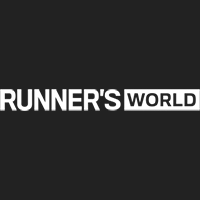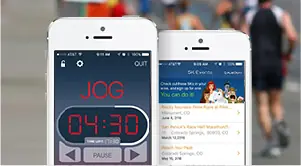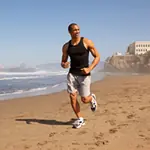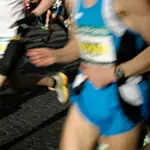"Run by effort, not pace." - Coach Jenny Hadfield
As Hadfield, a 20-year veteran running coach based in Chicago, has seen watches evolve from analog to GPS, she's noticed her clients becoming more and more tuned in to the feedback coming from their wrists.
But her own running heroes—Joan Benoit Samuelson, Frank Shorter, and Bill Rodgers, to name a few—notched their benchmark performances sans gadgets. "We've gone from listening to our bodies to being guided by a number," says Hadfield.
Your goal pace doesn't account for weather, terrain, mood, and other variables, so runners sometimes push themselves too hard while pursuing it.
"It can also leave a lot of potential PRs out there," says Hadfield, who's seen runners balk at numbers that they're capable of achieving. "The goal is to let your body do what it's ready to do on any given day."
So Hadfield created a three-zone effort spectrum that runners can visualize: yellow for easy, orange for moderate, red for hard (see chart, above). Here's how to use the effort spectrum at your next race.
5K
Newbies should spend the first two miles in the yellow zone before shifting into orange. Seasoned runners should warm up in the yellow zone, then split the race evenly between orange and red.
More from ACTIVE: 9 Mistakes to Avoid in Your First 5K
10K
First-timers might run the whole race in the yellow zone. "Experienced racers will drop the yellow zone entirely, using it only to warm up," Hadfield says.
Half Marathon
First-timers should spend the first seven miles in the yellow zone, increase to orange for miles eight to 12, then redline it for the final push. Experienced racers can run the first five miles in the yellow zone and miles six to 11 in the orange zone, then redline to the end.
Marathon
First-timers should stay in the yellow zone for the first 14 miles, orange for miles 15 to 24, then red. Experienced racers should spend the first 10 miles in the yellow zone, increase to orange for miles 11 to 22, then redline to the end.
"Hug it out." - November Project's Brogan Graham
November Project cofounder Graham (right) spends a lot of time on social media, but virtual community isn't what pried him out of bed for morning workouts with his friend, Bojan Mandaric:Real-life human connection motivated the duo to honor their early winter fitness resolution, and it's what has prompted thousands of others to embrace—figuratively and literally—their group sweat sessions.
Before every November Project workout (which now take place in 16 American cities and in Canada), everyone engages in a group hug. And in Madison, Wisconsin, the hug follows the run.
"Sweaty hugs are pretty gross," Graham says. Even dry hugs are too weird for some, who do one workout and never come back. "But for those who remain, it creates a good vibe between people who want connections," says Brogan.
That's something online media can't do, because it allows people to hide behind their screens.
More: 8 Ideas to Make Running Fun
Read the original article published on Runner's World.
 Sign up for your next race.
Sign up for your next race.- 5
- of
- 5
About the Author











Discuss This Article